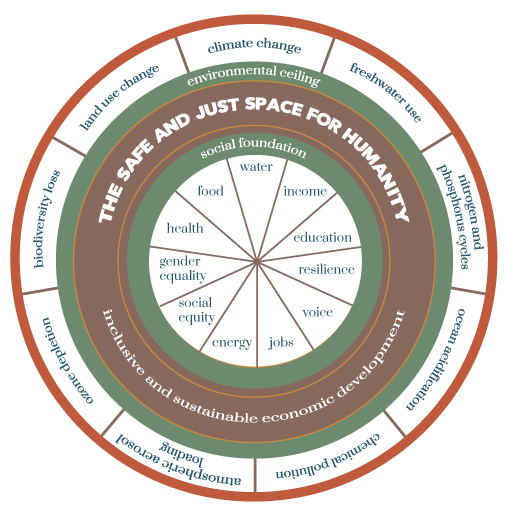Balanced Environment
What we surround ourselves with, where we choose to live, the conditions we create or that we are ensconced in, extending from our home out to the planet at large, describes the environment in which we live.
When considering that very broad definition, I have found that the
Donut Economics Model provides a great template for reviewing and balancing human and planetary environmental factors.
Kate Raworth, the author of “Donut Economics”, describes these planetary environmental boundaries thus:
“The environmental ceiling consists of nine planetary boundaries (climate change, ocean acidification, stratospheric ozone depletion, disruption of the nitrogen and phosphorus cycles, global freshwater use, land use changes, biodiversity loss, aerosol loading in the atmosphere, and chemical pollution), as set out by Rockstrom et al, beyond which lie unacceptable environmental degradation and potential tipping points in Earth systems.”
Raworth added the human wellbeing dimensions, drawing on the United Nations’ 17 sustainable development goals (SDGs) to transform our world, which are derived from internationally agreed upon minimum social standards.
Raworth’s 12 dimensions included quality food, clean water and sanitation, good health and wellbeing, quality education, gender equality, affordable and clean energy, decent work and economic development, social equity, quality housing, social network, peace and justice, and political voice.
She concluded that:
“Between social and planetary boundaries lies an environmentally safe and socially just space in which humanity can thrive.”
This seems most apt as a way to encapsulate our own sense of what a balanced environment should look like for us.
When considering our environment we obviously must start in our own backyard, but our awareness and actions must extend out to the planetary boundaries Raworth drew upon for her model.
Our environmental wellness is tenuous at best when we ignore our impact on the planet that we live on.






